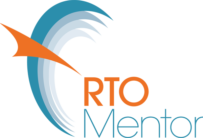The standards have been Endorsed by COAG and enabled by NVET regulator act 2011. Section 22 Clause 3.6 applies to existing RTO, this clause applies to the implementation of the USI.
The benefits for RTOs is that there will only be one set of standards for RTOs in due course. As well as one set of standards for regulators. Interestingly TAC have decided to change the numbering of the standards, however the rest remains the same (apart from references to website that relate to TAC only). So any TAC registered RTOs can start reviewing the standards now and make any changes that need to occur.
As far as implementing them into your RTO immediately, should you have a pending audit around the time that they come into play, ASQA will take a fair and reasonable approach and where there are new measures these will be considered. The rest of your compliance needs to be completed. Renewal applications will be submitted through ASQAnet based on processes in place at that time. They have completed a mapping of how the standards relate to each other.
This time around the 8 Standards come with information on the intent of the standard, there is the Standard and then a context statement. This statement is not part of the standard, it is only an explanation. It cannot be audited against. It is however very useful in getting your head around the actions you could do within your RTO.
In addition ASQA has produced a “Users Guide”. Which contains various case studies.
Looking at what the standards contain, we now have Clauses against each of them. Each standard varies; standard 4 has one clause, standard 1 has 27 clauses. You MUST comply with each of the clauses.
It has been noted by ASQA and other regulators that at present there is overlap with the clauses. Approaches are being reviewed as to how they will be audited. It might mean clusters are audited.
Where there are Schedules referred to in clauses, these schedules become part of the clause. So why do we have the schedules? Well it makes it easier to make changes to the Standards. The Schedules appear so they can be updated from time to time without having to go through a change to the standard. (which could mean a lengthy process).
There is also a glossary. I totally recommend you READ this to understand how the words are being used.
Of course there are other instruments that we as RTO compliance people need to also review:
- NSSC policies
- AQF
One of the goals of the standards was to avoid other documents, so an attempt has been made to make them complete. This is why the NQC now NSSC has been brought in. we no longer have to refer to the originating website to be compliant. You just need to refer to the standard.
Other instruments include:
- Standards for Training Package and Accredited courses
- Standards for VET regulators
- Other Acts and Legislation
- Another Act is the Data provision requirements.
